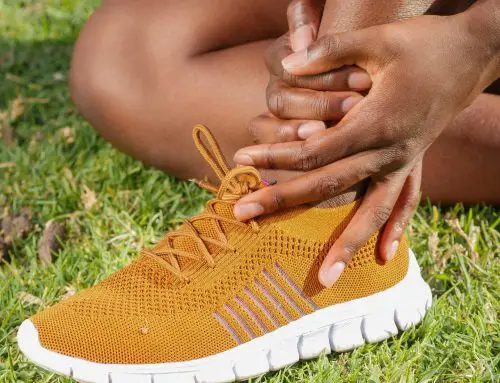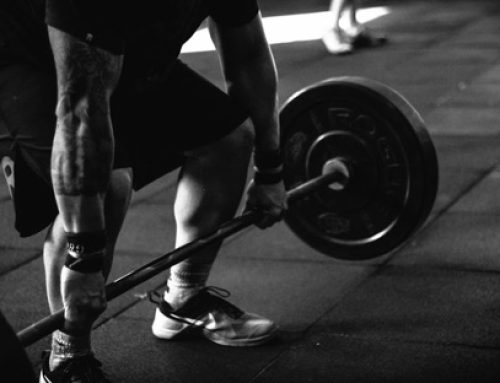Ladies and gentlemen, it’s time to pump some iron! But before we start breaking a sweat and flexing our muscles, let’s talk about the elephant in the room… or more accurately, the pain in the back. Yes, we all know the struggles of weightlifting-induced back pain. Some call it the necessary evil of building muscles, while others just curse their luck and reach for the painkillers. But what if I told you there’s a way to prevent this agony, leaving you pain-free and ready to slay the gym? Grab your dumbbells and get ready, because we’re about to navigate the treacherous waters of weightlifting back pain and come out victorious!
Contents
- 1 1. Understanding the importance of proper weightlifting form
- 2 2. Strengthening core muscles to support the back
- 3 3. Using equipment to alleviate stress on the spine
- 4 4. Incorporating stretching and warm-up exercises into your routine
- 5 5. Seeking professional guidance for a safe and effective weightlifting regimen
- 6 Don’t Let Back Pain Stop Your Gains
1. Understanding the importance of proper weightlifting form
Now, before we start talking about the importance of proper weightlifting form, let’s just take a moment to appreciate the sheer hilarity of someone attempting to lift a barbell with their back arched like a cat and their knees knocking together like a pair of maracas. We’ve all seen it happen, and let’s be honest, it’s pretty darn funny.
However, as amusing as it may be to watch someone struggle with their form, it’s also incredibly dangerous. Lifting weights with improper form puts a tremendous amount of strain on your muscles and joints, which can lead to serious injury. And let’s face it, spending weeks or months nursing a pulled muscle or strained ligament is far from hilarious.
So, to avoid becoming the butt of someone else’s weightlifting joke (or worse, winding up in the hospital), it’s crucial to understand the importance of proper form. Here are a few reasons why:
- You’ll get better results: When you lift with proper form, you’re engaging the correct muscles and optimizing your movements to target the areas you want to work. This means you’ll see better gains in strength, endurance, and muscle tone.
- It’s safer: We’ve already touched on this, but it bears repeating. Lifting with improper form puts you at risk for serious injury. Don’t be that person who tries to show off by benching twice their body weight with a curved back and flailing limbs.
- You’ll feel more confident: When you know you’re lifting with proper form, you’ll feel more in control and less like you’re about to drop the weight on your foot. Plus, you’ll look like you actually know what you’re doing.

2. Strengthening core muscles to support the back
Now, I know what you might be thinking. “Core muscles? What are we, gymnasts?” But hear me out. Strengthening your core muscles is more important than you think, especially when it comes to supporting your back.
Think about it this way: your back is basically the foundation for your entire body. Without it, you’re just a pile of jelly on the ground. So, if we want to keep our backs strong and healthy, we need to focus on strengthening the muscles that support it.
- Planks: If you’re not familiar with planks, they’re basically the workout equivalent of torture. But, they’re also one of the best exercises you can do for your core. Start by holding a plank for 30 seconds, and work your way up to a minute or more.
- Crunches: Yes, I know, crunches are so last decade. But, they’re still an effective way to target your abs and strengthen your core. Just make sure you’re not putting too much strain on your neck, and consider doing different variations like bicycle crunches or reverse crunches.
Remember, it’s not about having six-pack abs (although, if that’s your goal, go for it!). It’s about building a strong foundation and supporting your back, so you can live your best life without being sidelined by annoying aches and pains. Plus, who doesn’t want to feel like a superhero every once in a while?
3. Using equipment to alleviate stress on the spine
Are you tired of feeling like the Hunchback of Notre Dame after a long day at work? Fear not, my friends, for there are a plethora of gadgets and gizmos that can help alleviate pressure on your spinal cord.
First up is the lumbar cushion! This little guy will be your new best friend when it comes to making your back feel better. It’s as if the cushion is whispering sweet nothings to your spine, saying “I got you, boo”. Just plop it on your chair and feel the magic happening.
Another piece of equipment that can help with spine stress is the standing desk. It’s like a regular desk, but taller. Take standing to a whole new level, people! No more slouching over your computer, now you can be Captain Straight Back while answering emails.
- One point to remember is to keep your computer monitor at eye level, so use a monitor stand if necessary.
- Take breaks from sitting/standing to stretch and walk around. No one wants a stiff spine!
So there you have it, folks. Equip yourself with some spine-friendly devices, and you’ll be feeling like a brand-new person in no time. Your spine will thank you, and you can finally stop blaming your poor posture on “text neck”.
4. Incorporating stretching and warm-up exercises into your routine
Now that we’ve talked about the importance of stretching and warming up, let’s get down to the nitty-gritty of how to incorporate these exercises into your routine. Because let’s face it, if it’s not convenient, you’re not going to do it.
First and foremost, start small. Nobody expects you to become a contortionist overnight. Begin your stretching regimen with some simple neck rolls, shoulder shrugs, and wrist stretches. If you want to feel extra fancy, throw in a few spinal twists and hamstring stretches. Remember to hold each stretch for at least 30 seconds to feel the full benefits.
It’s also important to incorporate warm-up exercises into your routine. This doesn’t mean you have to run a marathon, but it does mean you need to get your heart rate up a bit. Maybe start with a 5-minute brisk walk around the block, throw in some jumping jacks or high-knees, and top it off with a quick jog on the spot. Just enough to get your blood pumping and your muscles warm.
And last but not least, make it fun! Stretching and warming up doesn’t have to be a chore. Put on your favorite tunes and dance around the living room. Grab a friend and do some partner yoga poses. Or join a trendy new fitness class like goat yoga or trampoline aerobics (yes, it’s a thing). The options are endless, so get creative and find what works for you.
With these tips in mind, you’ll be a stretching and warming up pro in no time. Just remember to keep it simple, get your heart rate up, and most importantly, have fun!
5. Seeking professional guidance for a safe and effective weightlifting regimen
So, you want to start lifting weights? That’s great! But before you take that first step, let’s talk about the importance of seeking professional guidance. Trust me, you don’t want to end up like me – I once tried lifting without any guidance and ended up with a back injury that left me feeling like a contortionist for weeks. Don’t be like me. Here are a few reasons why professional guidance is crucial:
- Prevent injuries: As I mentioned earlier, lifting weights without proper guidance can lead to serious injuries. A professional trainer knows what exercises are safe for your body type and can teach you how to perform them correctly to prevent any unwanted accidents.
- Personalized Plan: Everyone’s body is different and thus requires a unique workout regimen. A professional trainer will create a personalized plan for you based on your fitness level, goals, and limitations.
- Motivation: Lifting weights can be challenging, especially when you’re just starting. A professional trainer can provide you with the necessary motivation and accountability to help you stay on track and achieve your goals.
So, there you have it – the importance of seeking professional guidance before embarking on a weightlifting journey. Trust me, it’s worth the investment. After all, you don’t want to end up like me, feeling like a human pretzel. Seek guidance, stay safe, and most importantly, have fun lifting!
Don’t Let Back Pain Stop Your Gains
Well, there you have it folks. Follow these tips and tricks to prevent back pain during weightlifting and you’ll be well on your way to becoming a ripped and healthy champion. Remember, lifting weights should be enjoyable and beneficial, not painful and detrimental. So, take care of your back, and it will take care of you. Now go out there and show those weights who’s boss!








Leave A Comment